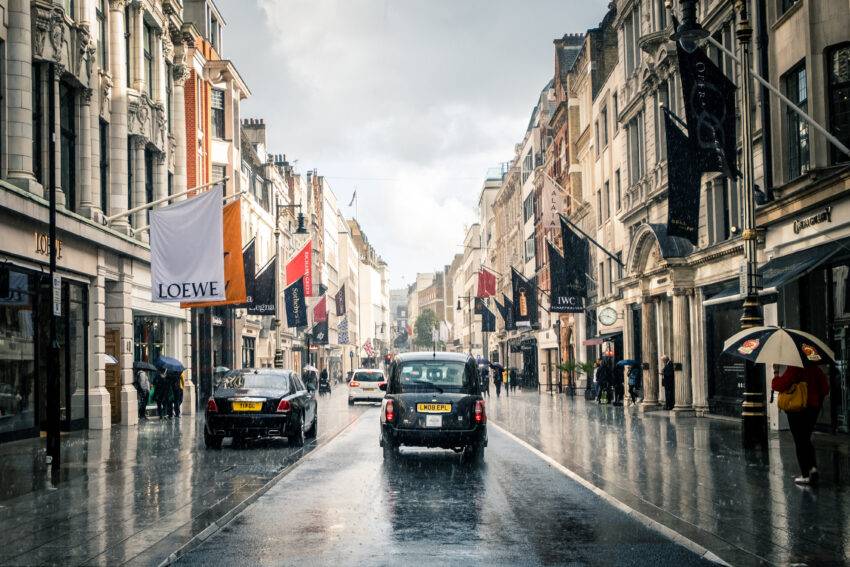How Glossier CEO Kyle Leahy got the beauty brand to turn a profit
When Glossier CEO Kyle Leahy took over from founder Emily Weiss two years ago, her mandate was clear: reinvent the millennial-coded direct-to-consumer darling for a new era. By all accounts, her strategy—launching Glossier in Sephora stores and more international territories—has worked. The Sephora deal alone resulted in more than $100 million in retail sales last year, and Leahy says that the company is now profitable and “sustainable.” Last week, the company doubled-down on the fragrance category and unveiled two new perfumes, Rêve and Doux. The scents are companions to Glossier You, the top-selling perfume at Sephora. Leahy came on the Most Innovative Companies podcast to talk about launching new products and building what she calls a modern legacy beauty brand. You took over from a female founder who had an outsize presence. How did you approach your role as her successor? Emily and I had a deep connection right from the start. We aligned on values, how we thought about brand building, how we thought about people. That connectivity between how she and I view businesses and brands has been a really consistent thread throughout. I joined as chief commercial officer first and then took the baton from her as CEO about six months after that. She continues to have a really important role in creative and campaign development and product development and in design—things that she really is passionate about. I can supplement her skills with running the business and scaling and driving our business to the next level. I first heard about Glossier when I was 23. I’m in my thirties now. How are you growing up with your customers? We’re on year 10 of building a forever brand. Brands that have longevity are not just connecting with just one demographic. They connect with a mindset, they connect on a values basis and a deep emotional basis. Glossier has tapped into that in a way that I think very few brands in any category have done in the last decade. That’s why people wear the sweatshirt of a beauty brand, or they line up for hours outside of a store. They want to be part of something bigger. A big contingent of our consumer base is millennial, but we have jumped to resonate with Gen Z and increasingly Gen Alpha. We see that in things like our social platforms. Instagram is still a really important brand platform for us and we continue to see significant growth there. At the same time, on TikTok, we’ve seen exponential growth. We’ve gone from about a billion views on #Glossier to about 3 billion since we launched in Sephora [in February 2023]. Do you think about updating your branding as it grows up? One of the things that we do exceptionally well at Glossier is move at the speed of culture. We’re in the zeitgeist, whether that’s through our strategic partnerships like the one we have with the WNBA or the way that we do our social impact work or the way that we’re doing our campaigns. Millennial pink was because of Glossier and because of how important this brand has been to the last decade. Glossier launched in Sephora in 2023. Why did you need to move beyond your direct-to-consumer business model? Glossier was at the forefront of bringing beauty online and showing that you could really transition an editorial and social platform and social content into a commerce experience. But direct-to-consumer is not our value proposition: Our community and our customers don’t shop with Glossier because it’s direct-to-consumer. We just happened to be DTC. Channels and customers evolve, and listening to our community, it became clear that we had a huge opportunity to bring Glossier to more people and go where they are shopping. When Glossier first launched in 2014, the idea of being skin-first or “no makeup makeup” seemed really fresh. Now a lot of similar brands exist, such as Merit. How do you stand out from these competitors? Most brands in beauty start as a single category. They’re makeup or skincare, and then maybe they move into other categories. We were built from the beginning as a multi-category brand. So we make makeup, skincare, fragrance, body care, and merch. We have transcended beauty. We’re a lifestyle brand. What is your strategy when it comes to expanding into different categories? Fragrance is one of the most exciting parts of our business. Glossier You was launched in 2017, so has been in the market for almost seven years. The fragrance is constructed to be intentionally missing its top note, so it smells a little different on everyone. I think it’s perfectly positioned: We used to sell a bottle every 40 seconds, now it’s every 20 seconds. We’re building the next fragrance house for the next generation and really excited about what that can mean for Glossier. Every beauty founder I speak to tells me that if there’s one beauty brand that could IPO, it would be Glossier. What’s the financial future of the company? We’re building the next forever beauty brand,

When Glossier CEO Kyle Leahy took over from founder Emily Weiss two years ago, her mandate was clear: reinvent the millennial-coded direct-to-consumer darling for a new era. By all accounts, her strategy—launching Glossier in Sephora stores and more international territories—has worked. The Sephora deal alone resulted in more than $100 million in retail sales last year, and Leahy says that the company is now profitable and “sustainable.”
Last week, the company doubled-down on the fragrance category and unveiled two new perfumes, Rêve and Doux. The scents are companions to Glossier You, the top-selling perfume at Sephora. Leahy came on the Most Innovative Companies podcast to talk about launching new products and building what she calls a modern legacy beauty brand.
You took over from a female founder who had an outsize presence. How did you approach your role as her successor?
Emily and I had a deep connection right from the start. We aligned on values, how we thought about brand building, how we thought about people. That connectivity between how she and I view businesses and brands has been a really consistent thread throughout. I joined as chief commercial officer first and then took the baton from her as CEO about six months after that. She continues to have a really important role in creative and campaign development and product development and in design—things that she really is passionate about. I can supplement her skills with running the business and scaling and driving our business to the next level.
I first heard about Glossier when I was 23. I’m in my thirties now. How are you growing up with your customers?
We’re on year 10 of building a forever brand. Brands that have longevity are not just connecting with just one demographic. They connect with a mindset, they connect on a values basis and a deep emotional basis. Glossier has tapped into that in a way that I think very few brands in any category have done in the last decade. That’s why people wear the sweatshirt of a beauty brand, or they line up for hours outside of a store. They want to be part of something bigger.
A big contingent of our consumer base is millennial, but we have jumped to resonate with Gen Z and increasingly Gen Alpha. We see that in things like our social platforms. Instagram is still a really important brand platform for us and we continue to see significant growth there. At the same time, on TikTok, we’ve seen exponential growth. We’ve gone from about a billion views on #Glossier to about 3 billion since we launched in Sephora [in February 2023].
Do you think about updating your branding as it grows up?
One of the things that we do exceptionally well at Glossier is move at the speed of culture. We’re in the zeitgeist, whether that’s through our strategic partnerships like the one we have with the WNBA or the way that we do our social impact work or the way that we’re doing our campaigns. Millennial pink was because of Glossier and because of how important this brand has been to the last decade.
Glossier launched in Sephora in 2023. Why did you need to move beyond your direct-to-consumer business model?
Glossier was at the forefront of bringing beauty online and showing that you could really transition an editorial and social platform and social content into a commerce experience. But direct-to-consumer is not our value proposition: Our community and our customers don’t shop with Glossier because it’s direct-to-consumer. We just happened to be DTC. Channels and customers evolve, and listening to our community, it became clear that we had a huge opportunity to bring Glossier to more people and go where they are shopping.
When Glossier first launched in 2014, the idea of being skin-first or “no makeup makeup” seemed really fresh. Now a lot of similar brands exist, such as Merit. How do you stand out from these competitors?
Most brands in beauty start as a single category. They’re makeup or skincare, and then maybe they move into other categories. We were built from the beginning as a multi-category brand. So we make makeup, skincare, fragrance, body care, and merch. We have transcended beauty. We’re a lifestyle brand.
What is your strategy when it comes to expanding into different categories?
Fragrance is one of the most exciting parts of our business. Glossier You was launched in 2017, so has been in the market for almost seven years. The fragrance is constructed to be intentionally missing its top note, so it smells a little different on everyone. I think it’s perfectly positioned: We used to sell a bottle every 40 seconds, now it’s every 20 seconds. We’re building the next fragrance house for the next generation and really excited about what that can mean for Glossier.
Every beauty founder I speak to tells me that if there’s one beauty brand that could IPO, it would be Glossier. What’s the financial future of the company?
We’re building the next forever beauty brand, which means we’re playing the long game. We’re building a business that has runway and has consistent, sustainable, and profitable growth. With that approach, a lot of opportunities open up, and we’re always thinking about what that looks like.
Is Glossier profitable?
We are profitable and [the business] is sustainable.
Glossier has a long history of engaging with its fans. In an announcement about reverting back to the original formula of your balm dotcom lip balm, you included negative social media comments about its reformulation. How do you engage with your community?
We were born of, by, and for the Into the Gloss community. The blog that Emily wrote that preceded Glossier is very much at our roots. Our community is really active in product creation, whether it was through a Slack channel in the early days or us listening to our social community and feedback on platforms like Instagram and TikTok or Reddit. Not everyone will always agree, but I often say to our teams how many brands would kill to have this many people wanting to have a conversation about them. Part of our superpower is that we listen very actively to the good and the bad and we take it into our product strategy.






















